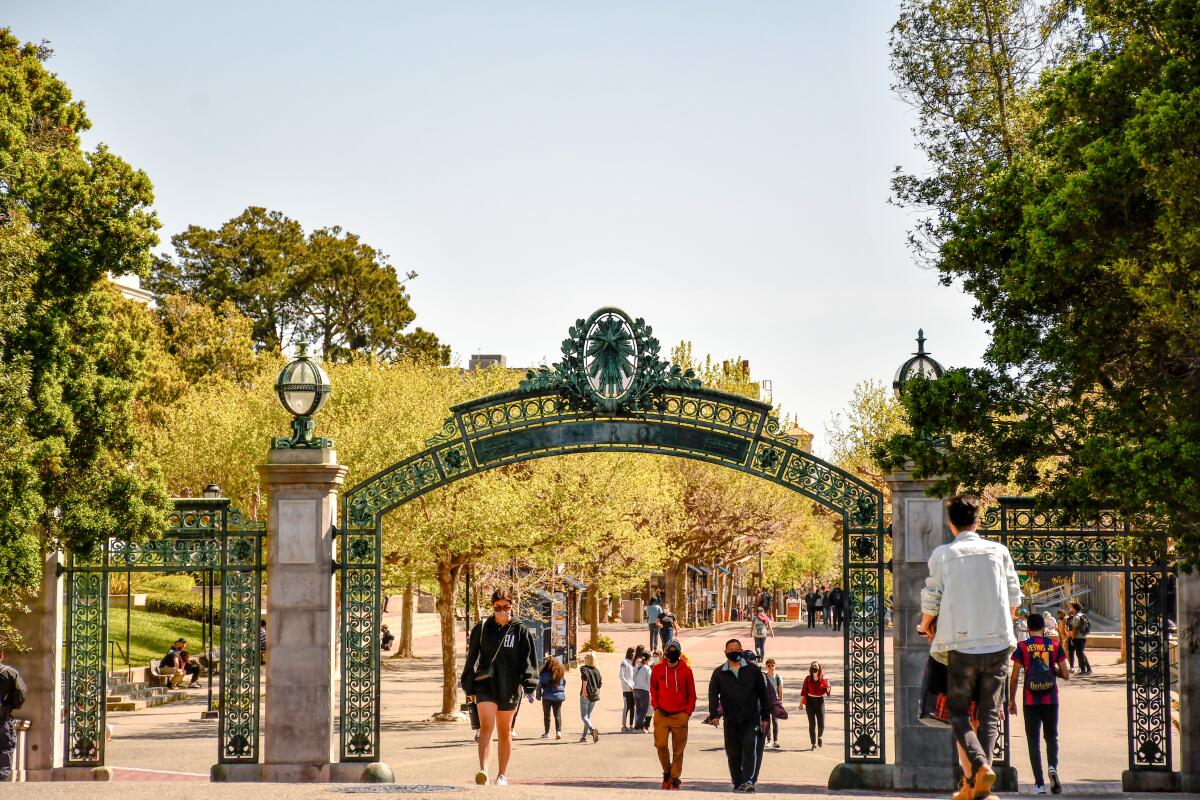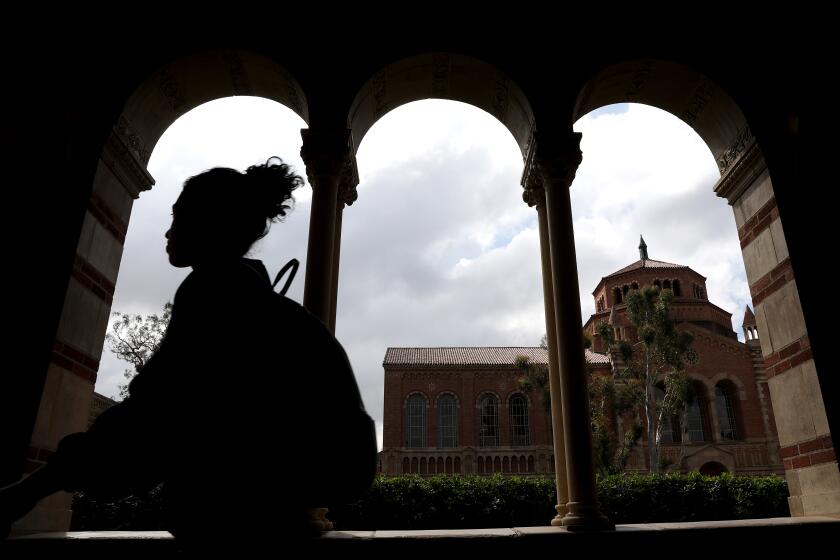Op-Ed: Another record year for college applications? Please, no

With the first round of college admissions deadlines days away, my advice for this year’s high school seniors is simple: Apply to fewer colleges. It will benefit you and every other student applying.
During the 2020-21 admissions cycle, the widespread adoption of test-optional policies emboldened students to apply to colleges that once seemed out of reach. Yet the increased number of gap-year students who had deferred enrollment, mainly because of the pandemic, made students nervous about the availability of spaces in freshman classes. This combination of hope and uncertainty led students to apply to a record number of colleges, driving up application totals and lowering acceptance rates across the country.
We should focus on preventing another record-breaking application year from happening. The demands of applying to more colleges take time away from students’ schoolwork and nonacademic responsibilities, while the added stress affects their mental health and well-being. The surge in applications has led admissions offices to streamline reviewing of applications, which can destroy the very essence of “holistic admissions,” the approach used by selective colleges that focuses on the “whole student” rather than just GPAs and test scores.
Colgate University made headlines for its 102% increase in applications in 2021. UC Berkeley’s applicant pool climbed by 28%, with a record 112,800 students seeking spots in the freshman class. And at the University of Pennsylvania, where I worked in admissions, applications went up by 34%.
The abundance of applications might seem like a windfall for colleges, but for their admissions offices, it is more like a curse.
Most admissions offices hire seasonal readers to help them “read” the thousands of applications. At the University of Pennsylvania, I once trained these readers. Some were former admissions officers, stay-at-home parents, wannabe-admissions officers or friends of friends who wanted a glimpse into the process. I could only spend a few hours with them going over the basics of reading an application — something that can take months or years to master.
Admissions offices rely on seasonal readers every year. Despite applicant pools doubling or even tripling in the last decade, it is difficult to create new positions in any office on a college campus, especially during a pandemic.
Selectivity grew at UCLA, where the admission rate dropped to 10.7% this year from 14.4%.
Yet reading an application has only become more complicated. Most selective colleges require a full application, a main essay of up to 650 words and an extensive supplement. Yale University’s supplement requires nine additional essays. The University of Michigan asks all applicants to write two additional essays; students who apply to its business school must write two more.
When I worked at Penn, I was supposed to read an application in about 20 minutes. It always took me longer, and I am a speed-reader as most admissions officers are forced to become. To read and evaluate more applications with the same number of admissions officers, colleges are cutting corners.
The Chronicle of Higher Education reported in 2017 that a number of elite colleges had revamped their reading and evaluation process to accommodate growing applicant pools. Penn has reduced the initial read of an application to about four minutes. Other schools — including Pomona College, Swarthmore College and Emory University — have also tried to make their approaches more time-efficient.
If colleges are not willing to increase their admissions staff and invest more time in evaluating applicants, why do so many continue to recruit and encourage students to apply knowing the schools’ staffing woes, overflowing applicant pools and shockingly low acceptance rates?
Because the more applications a college receives, the more money it makes. Many application fees hover around $75. Multiply that by 46,469 — the number of applications Brown University received last year — and suddenly nearly $3.4 million in fees have been collected, not counting the students who qualify for fee waivers.
And the more applicants a selective college turns down, the more selective it becomes. Brown’s 2021 acceptance rate was 5.4%. Honestly, most of the students getting admitted have to be the superhuman-like ones. Mere mortals really shouldn’t be applying.
Colleges could reduce this application frenzy by curtailing their recruitment strategies, which include putting a stop to sending promotional materials to students who have almost no chance of getting in. And if students knew what the actual acceptance rates were for a college’s early and regular rounds of admission, they could be more thoughtful and rigorous about how many colleges to apply to.
Yet colleges continue to buy names of and information about students from testing organizations, send students marketing materials, and regularly visit their high schools, communities and email inboxes. There is an application greediness going on among colleges that students unknowingly fuel when they respond to these marketing ploys.
If the colleges are not willing to be a part of the solution, students can be the change-makers by being more selective about where they choose to apply. If that occurs, applicant pools will shrink, acceptance rates will increase — and students will begin to reclaim the college admissions process as one of acceptance instead of rejection.
Sara Harberson is the author of “Soundbite: The Admissions Secret That Gets You Into College and Beyond” and the founder of Application Nation. She was the associate dean of admissions at the University of Pennsylvania and the dean of admissions at Franklin & Marshall College.
More to Read
A cure for the common opinion
Get thought-provoking perspectives with our weekly newsletter.
You may occasionally receive promotional content from the Los Angeles Times.











